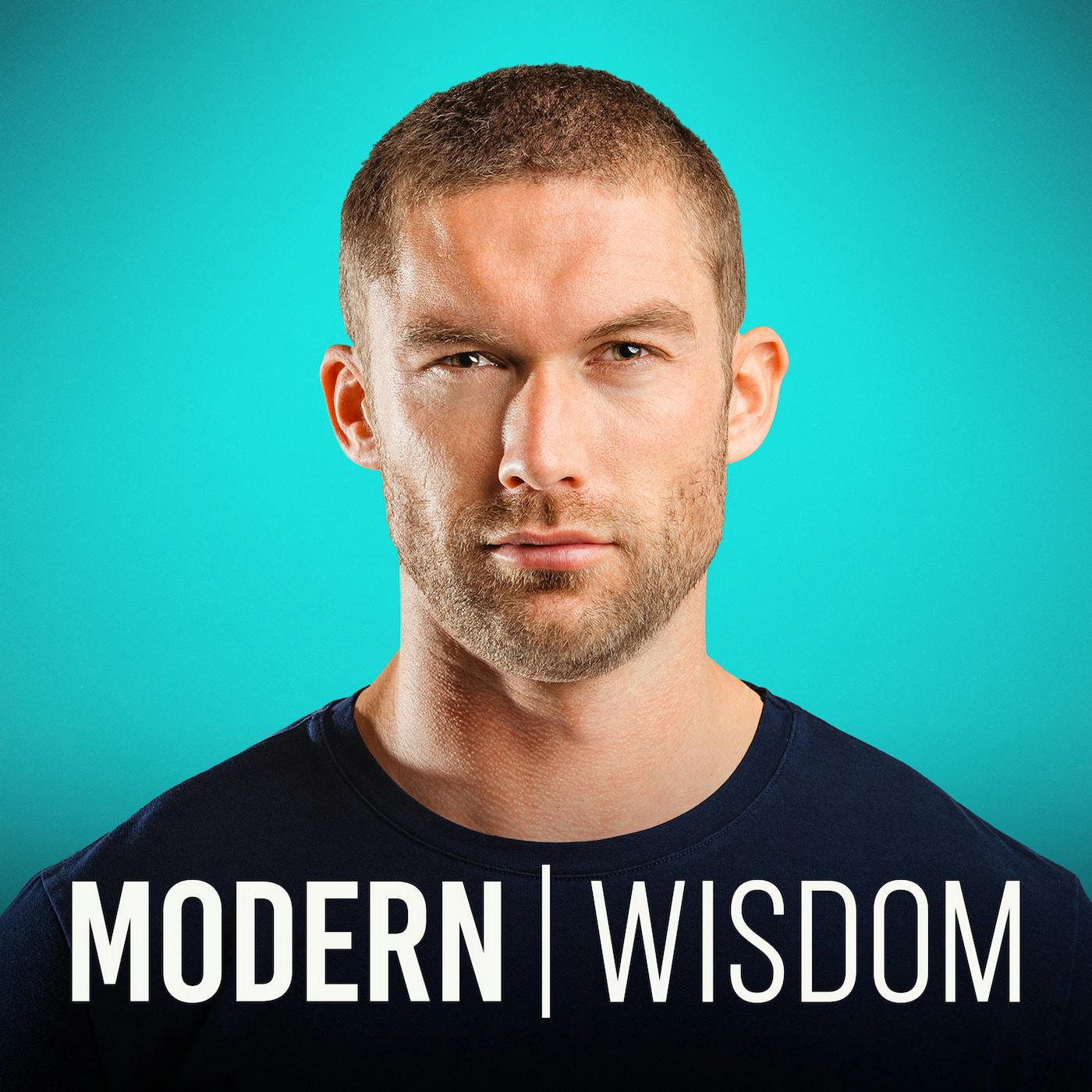
February 15, 2025 • 1hr 27min
#903 - Rick Hanson - The Science Of Rewiring Your Brain To Be Less Miserable
Modern Wisdom

Key Takeaways
- The brain has a natural negativity bias - we are hardwired to scan for, focus on, and remember negative experiences more than positive ones
- Happiness and wellbeing can be cultivated through deliberate practices that help beneficial experiences sink in and become encoded in the brain
- The HEAL framework provides evidence-based steps for transforming positive experiences into lasting neural traits:
- Have a beneficial experience
- Enrich it
- Absorb it
- Link it to negative material (optional)
- Breaking rumination cycles requires specific interventions like taking action, focusing on bodily sensations, or shifting visual perspective
- Lasting change is possible through consistent effort, skillful methods, and connecting with one's fundamental nature
Introduction
Dr. Rick Hanson joins Modern Wisdom to discuss the neurobiology of happiness and how we can rewire our brains for greater wellbeing. As a psychologist and bestselling author, Hanson brings together insights from neuroscience, psychology, and contemplative wisdom traditions to explain practical methods for transforming fleeting positive experiences into lasting beneficial traits.
Topics Discussed
The Neurobiology of Mental States (1:50)
Hanson explains that our moment-to-moment experiences correlate with underlying patterns of neural activity. We have both transient states and more enduring traits that influence each other:
- States are temporary experiences including emotions, sensations, attitudes, and thoughts
- Traits are underlying tendencies that foster certain states
- States can become traits through a process of "positive neuroplasticity"
- The goal is to take charge of this process rather than being passively swept along
The Brain's Negativity Bias (10:55)
Hanson outlines five key aspects of our brain's inherent negativity bias:
- Scanning for bad news - continuously looking for threats and problems
- Over-focusing on negatives - paying disproportionate attention to negative events
- Overreacting - responding more intensely to losses than gains
- Over-learning - negative experiences leave stronger impressions
- Sensitization - becoming increasingly reactive to negative experiences
The HEAL Framework in Detail (32:37)
Hanson breaks down his evidence-based HEAL framework for transforming positive experiences into lasting change:
- Have a beneficial experience
- Notice or create positive experiences in daily life
- Be open to feeling good
- Enrich the experience
- Stay with it for 10-20 seconds
- Feel it in your body
- Notice what's rewarding about it
- Absorb the experience
- Intend for it to sink in
- Imagine it becoming part of you
- Link positive and negative material (optional)
- Hold both positive and negative in awareness
- Let the positive soothe and replace the negative
Breaking Free from Rumination (1:10:33)
Hanson explains the neuroscience of rumination and provides practical methods to break free:
- What happens during rumination:
- High activation in the default mode network
- Excessive self-referential thinking
- Reinforcement of negative patterns
- Methods to break the cycle:
- Take concrete action
- Focus on body sensations (interoception)
- Engage in intense positive experiences
- Shift to a whole-field perspective
The Five-Minute Challenge (34:58)
Hanson presents a practical daily framework for implementing these methods:
- Notice good moments throughout the day and let them sink in (1 minute total)
- Deliberately cultivate specific positive traits you want to develop (1 minute)
- Marinate in "deep green" - your natural state of well-being (1-3 minutes)
Motivation and Contentment (59:26)
Hanson discusses two different models of motivation:
- Deficit-based motivation
- Driven by sense of lack or insufficiency
- Creates ongoing stress and dissatisfaction
- Common but ultimately toxic
- Fullness-based motivation
- Acting from sense of already being enough
- Maintains high standards without self-criticism
- More sustainable long-term
The Science of Change (1:18:47)
Hanson addresses whether deep change is possible and what enables it:
- Key factors for transformation:
- Consistent effort over time
- Skillful methods and guidance
- Connection with fundamental nature
- Two tracks of development:
- Gradual cultivation of new traits
- Recognition of inherent wholeness
Conclusion
The conversation demonstrates that while our brains have an inherent negativity bias, we can actively shape our neural architecture through deliberate practices. The HEAL framework provides evidence-based methods for transforming positive experiences into lasting beneficial traits. Key to this process is slowing down enough to let good experiences really sink in, rather than constantly chasing the next thing. With consistent effort and skillful methods, significant positive change is possible.
The episode emphasizes that happiness and wellbeing are skills that can be developed, not fixed traits we're stuck with. By understanding and working with our brain's natural tendencies, we can cultivate greater contentment, resilience, and flourishing in our lives.